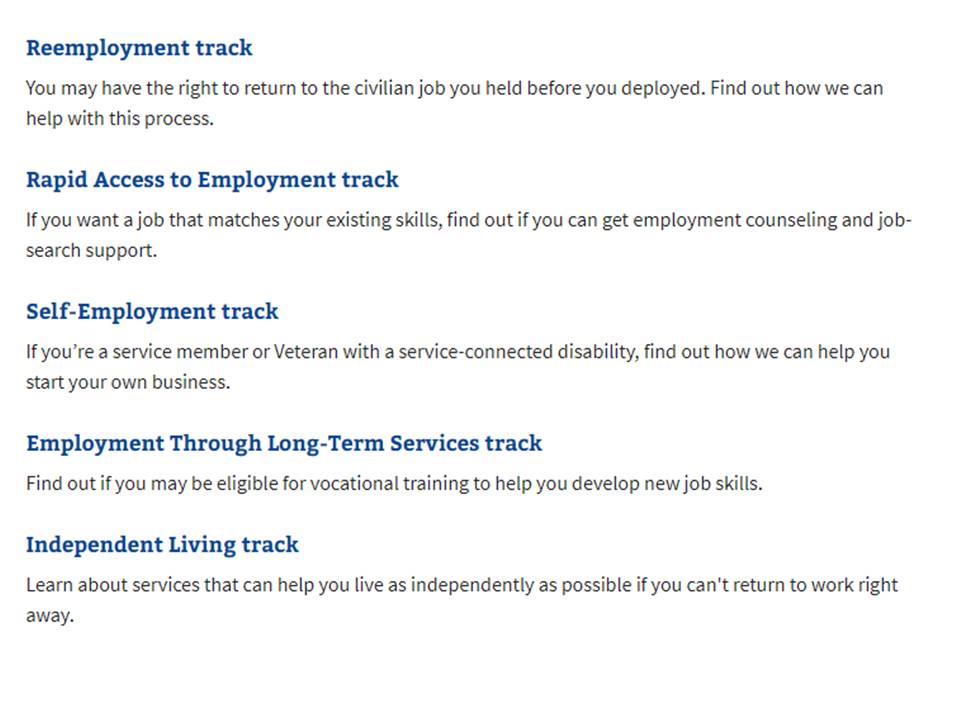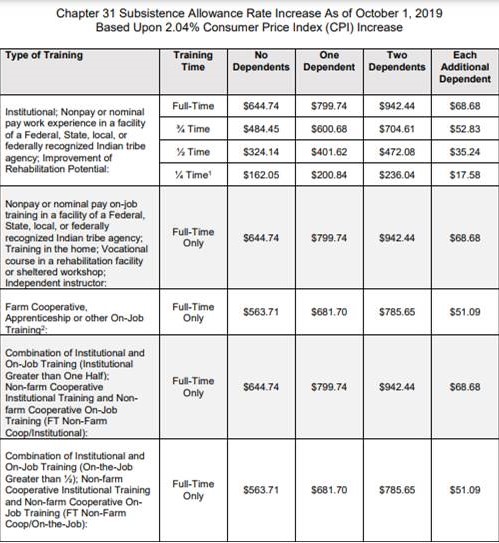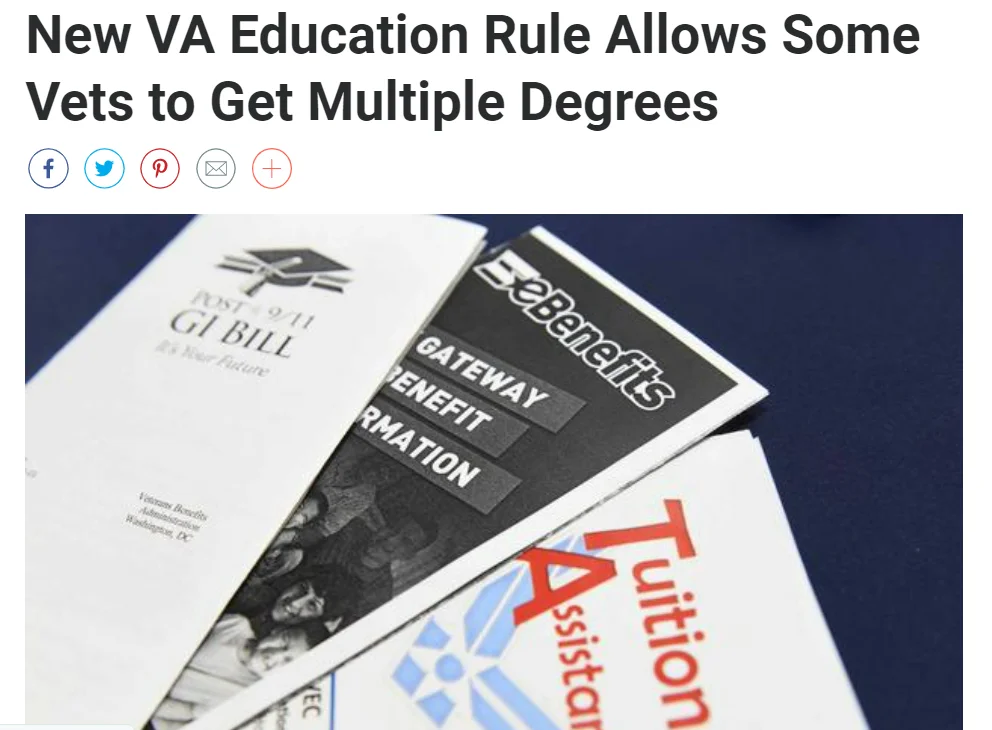VETERAN READINESS AND EMPLOYMENT
Soldiers perform an airborne operations jump from UH-60 Black Hawk helicopters at Fort Bragg, N.C., July 17, 2020. (U.S. Army Reserve photo by Master Sgt. Michel Sauret)
September 10, 2020
HERE’S WHAT YOU NEED TO KNOW
If you’re transitioning out of the military and looking into what education and job benefits you may be eligible for, this article is for you. If you’re not at that point yet, consider reading this now so you know what to expect. I’d also suggest that you set it aside to read later when you’re actually going through the separation process.
So have you heard of Vocational Rehabilitation and Employment (VR&E)? I’d never heard of it until I happened to randomly catch up with a friend and learned he used VR&E for his master’s degree. After hearing about his experience, I posted a quick poll on social media and found that about two-thirds of the people who responded were not familiar with VR&E. Not surprising. As a result, this program tends to be underutilized. Also…not surprising. Again, this seems to be one of those programs/benefits that people learn about through word of mouth–for whatever reason. I’m going to use this post to try to bring awareness to a program that not everyone qualifies for, but is worth looking into regardless. Something else to note: The official name of the program just changed from “Vocational Rehabilitation and Employment” to “Veteran Readiness and Employment.”
In a nutshell, VR&E is a job placement / employment program with the ultimate goal of getting people employed. It’s for people who want to work, can be employed, but don’t have the necessary skills to obtain a job that won’t aggravate their service-related disabilities. The primary objective of this program is to assist you with acquiring the skills, degree, or certifications you need to locate “suitable employment.” The goal isn’t just to help you find any job–but a job that’s compatible for you based on your service-related disabilities. The most important criteria you must meet to qualify is a 10% disability rating.
I had the opportunity to speak with a VR&E counselor and three former soldiers who used the VR&E program to get their experiences with the program. As per usual, I appreciate that these people took the time to speak with me and share their thoughts. Hopefully this will be useful for you whenever you make the decision to transition out of the military! This one is definitely a longer read. And that’s because this program is incredibly complex and highly individualized. There’s a lot I don’t cover in this piece, so please keep in mind that this is meant to simply be an overview and you need do your own research. Here we go!
In your own words, what is VR&E?
According to one of the former soldiers I interviewed, VR&E is one of the best kept secrets of the Army. He didn’t learn about VR&E until about a year before he left active duty and it was a game changer for him. He referred to it as the GI Bill on steroids: “It’s a program that’s like the GI bill but better, if you qualify for it. You qualify for it by having a disability rating of 10% or greater. It also helps to have a transitional lead for job placement.
Another described it as “a job placement program designed to fill the gaps in between where you are and where you need to be, ultimately to get the job you want.”
Speaking with the VR&E counselor, she described the program as “a very confusing program,” as it’s a highly specific and individualized program where the benefits and accommodations manifest themselves in different ways for every person. Consequently, you should know that you may enter the program at the same time as a friend, have identical issues and circumstances, but different employment paths and different goals. As a result, your individual limitations might present themselves differently, which may result in different types of benefits. So instead of getting frustrated because you’re asking questions like “Why did so-and-so get x, y, and z benefits and I didn’t?” it’s best to just focus on your individual situation and not get wrapped up in what other people are doing. Sure, inquire about any and all possibilities, but most times, the counselor won’t be able to shed any light on your questions about someone else’s individual situation because of HIPAA.
So, what’s unique about VR&E?
First, the program has five unique tracks you can explore on your path to post-military employment. The image below is from the VA website. You can find the page here and click on each individual link to learn about each specific track.

Second, you can go to a private or foreign (Foreign schools are on hold for now. Check out this article for details) school…FULLY FUNDED (Unlike the GI Bill). Yes! That’s right. Straight from the counselor: “If the VR&E approves a program at a private school, it’s fully covered. But the key is getting it approved… It’s not impossible, but there are very specific stipulations. For example: the counselor would need to know if there’s a comparable program at a state school that would be less costly (High-cost plans also require higher approval from a supervisor), so it does get a bit more complex. But for those requiring a specific program at a private institute, VR&E is definitely a good way to go if it’s approved!”
Third, you can receive a housing allowance–but it’s typically less than the GI Bill (I’ll discuss this in a different section below). However, something that’s unique about VR&E is the “Employment Assistance Allowance” or EAA payments. Essentially, the VR&E will assist you with two additional months worth of housing allowance payments after graduation. Straight from the counselor: “Following graduation, once a veteran has begun the “job ready” phase (there’s a few items that need to be in place, ex: a presentable resume, a meeting with an employment coordinator) they begin looking for work. EAA payments work similar to the unemployment office: the veteran will usually submit a log of employment contacts – job fairs attended, interviews, jobs applied for, etc, anything to show that they are putting in a good faith effort to find employment. After 30 days, they will receive their first payment, and after the second 30 days of job searching, they receive their second payment. Even if they find a job within these two months they can still receive both EAA payments! They just need to provide the employer information and show that they have retained employment during this time. And to clarify, these are NOT automatic payments. You must do the legwork to seek this additional benefit. The additional payments are equivalent to whatever amount you were previously earning while in school.”
How did you use the program / How have you seen people use the program?
The three former soldiers I spoke with all used the VR&E for their master’s degrees. However, you can use it for a bachelor’s degree, a certification, training, practical job experience, employment counseling, and a plethora of other services that I haven’t even had the chance to dive into yet. So again, do your own research to learn about all of the possibilities! If anyone has used VR&E for any of the other tracks, I’d be interested to hear about it, so feel free to send me an email if you’re interested in sharing.
How do you qualify for VR&E?
The intent of the program is to assist veterans with a service-connected disability rating. If you have a 10% rating from the VA you can apply. With a 10% rating, there’s a bit more evidence and justification you’ll have to provide to display that you have enough barriers to employment or extenuating circumstances (brought about by the disability) to qualify. So it ultimately all depends on your personal situation. Typically, people who use this program have a 20% disability rating or higher. The specific nature of your VR&E benefits are derived from your personal limitations caused by documented disabilities.
The other main requirement is to justify whatever specific training / education / benefits you’re requesting. Beyond these two main criteria, the rest is based on your personal situation and career goals.
How does this program work in conjunction with the GI Bill?
First, with respect to the housing allowance benefit, the counselor I spoke with gave her take: “VR&E does have its own stipend; it’s based on how many dependents you have and it’s a flat rate nationwide. Generally, it pays less than the GI Bill (As the GI Bill is based off of zip code). Some years ago, Congress agreed to pass a law allowing veterans who were entitled to GI Bill to be paid the same housing allowance rate under VR&E. In other words, if you qualify for the GI Bill but you want to use VR&E, you could switch to the VR&E. Then you must prove your GI Bill eligibility with your certificate of eligibility. You’ll then receive the same monthly housing allowance (Equivalent to the BAH rate for E-5 with dependents at the zip code of the university) that you would’ve received if you’d used the GI Bill.” The counselor hit me with another important fact: “The GI Bill only pays half the national average of BAH for an E-5 with dependents if you’re going to school fully online. VR&E will still pay the same stipend regardless. So, for those students who plan to go to school online only, VR&E is a better option because their stipend (more often than not) is higher than the GI Bill’s reduced housing allowance rate for online education. The VR&E stipend is a flat rate–online or in residence–it doesn’t matter. And they’ll work with the veteran to ensure they’re getting the better rate either way.”
Here’s a summary of the current VR&E subsistence/housing stipend rates:

One former soldier shed light on his experience with me: “You’ll either receive the housing allowance listed on the VR&E website (see rates above) or if you have GI Bill time remaining (at least one month), you’ll receive the housing allowance you would have received on the GI Bill.” He explained that his mistake was that he didn’t serve the additional 90 days to qualify for any GI Bill benefits. So he could’ve been receiving an additional $2700/month in Hawaii instead of about $400/month since he was working three jobs and consequently doing school 3/4 time instead of full-time (see chart above on the second row, 3/4 time with no dependents: $484.45). Again, this program is not simple. But the amount of options there are is pretty cool. Check out the official VA website’s page on subsistence / housing allowance rates here.
Ok, now this piece is something significant worth noting. Formerly, the VA limited the amount of benefits you were entitled to with the “48 month rule,” which essentially dictated that you couldn’t use over 48 months of VA benefits. So let’s say you had 36 months (the maximum) of benefits for the GI bill and you also qualified for the VR&E maximum: 48 months. You couldn’t add them all up to receive a cumulative 84 months of tuition. You were capped at a cumulative 48 months between the GI Bill and VR&E.

Now, straight from the VA website: “Veterans who use Veteran Readiness and Employment (VR&E) benefits prior to using any other VA education program, such as the Montgomery GI Bill or Post-9/11 GI Bill, can still use up to 48 total months of the other educational assistance benefit programs.” This is a huge deal, and it’s something you should most definitely look into if you have a VA disability rating! Don’t get too excited though–this is a US government program–so of course, it can’t be that straightforward. According to an article published by Military.com, you would need to use your VR&E benefit first, because the use of VR&E doesn’t count against the GI Bill, but the opposite is not true. So using GI Bill education benefits will still count against the 48-month limit on VR&E benefits. Bottom line, there’s real potential here if you understand the rules, but you need to do your research.
What’s your advice for people leaving the military?
This information is important. You may not care now, but this is the type of information you’re going to wish you saved and packed away somewhere for when the time was right. Remember, it’s not a matter of IF you’re leaving the military, it’s a matter of WHEN. So don’t sell yourself short!
One soldier explained that he transitioned out of the Army right at five years as soon as he fulfilled his commissioning obligation. Therefore, he didn’t serve the additional 90 days required to qualify for 40% of the GI Bill (If these GI Bill figures don’t sound familiar to you, check this out). So his advice to anyone transitioning is to stay in the military for 90 days beyond your commissioning service obligation and earn 40% of the GI Bill! It’s three months people. You may not LIKE it, but you CAN do it. And it’s totally worth it. With this small investment of time, when you use ANY full time education benefits, you get full BAH. Instead this former soldier is receiving about $400/month, which in his location is about 15% of BAH.
Second, do not understate or downplay your service-related health issues. There is definitely a stigma associated with claiming disability. From my experience this is primarily a result of the people who blatantly abuse the program–embellishing their “injuries” and “disabilities” in order to qualify for more benefits. I’ve literally heard people tell stories about how they pulled a fast one and were able to get more benefits than they should’ve. I’ve also literally had people tell me I should tell the doctor such-and-such from a place of dishonesty to try to get additional benefits. Yup. We can all acknowledge that these types of people exist and they’ll have to deal with the consequences of their personal decisions. But their situation isn’t your concern and shouldn’t affect your decision to take advantage of benefits that you may qualify for! If you let the stigma influence your decision, you will 100% regret it later.
Another soldier recalled his most significant VR&E obstacle to overcome was simply getting his VA disability rating. He didn’t receive his initial rating (meaning he couldn’t apply for VR&E) for over a year after his separation date, because he didn’t start the process before he separated. His advice to anyone considering separating: Do your SFL-TAP and separation programs as EARLY as possible. A different soldier echoed this sentiment. He recommended starting the VA process one year out from your projected separation. Everything is very slow paced and mistakes will happen and paperwork will need corrections. The sooner you start, the better.
One soldier recounted, “I had two good resources that helped me along in the process. The first was the DAV (Disabled American Veterans) representative at my local office who was phenomenal, helped me put my claim together, and explained everything. His advice was to ALWAYS seek the assistance of a DAV representative if you’re dealing with a VA claim. It’s a bad idea to try to do it yourself because it’s a complicated process and when you’re paperwork gets kicked back, it delays the process even more. The VRE representative for my school was the second most helpful resource. Once you’re accepted to a school, then you’ll make contact with your VRE representative.
Overall, people noticed a variability of competence with counselors and the process. That being said, the key is to start early, be patient, save copies of paperwork, and follow up. Manage your expectations and know that the process won’t be quick or easy but it will be worth it! Lastly, if you’re someone who has used VR&E and you notice any mistakes or inaccurate information, please let me know so I can verify and fix it!
RESOURCES
You can get more information about Veteran Readiness and Employment on the official VA website here.
You can find information on the recent “48 month rule” update here.
Military.com article that’s helpful in understanding the context of the “48 month rule” change.
You can read about the application process for the VR&E here.
You can apply for VR&E here.
Thanks for reading, and I hope this was helpful for you!
